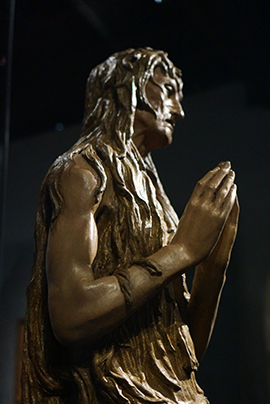A Shared Human Experience
A message from Dean Adrian Randolph
This summer, I spent a week and half in Europe, beginning in the United Kingdom and then making my way to Italy. During my travels, I was struck by several things.
First, I arrived in London just after the Brexit vote. The aftershocks were palpable. Most of the individuals I met, whether “Leavers” or “Remainers,” seemed surprised by the outcome. Moreover, the United Kingdom, which is not really a “kingdom,” certainly is not “united,” either: the country was disunited, with much chatter about the borders between Scotland and England, as well as the borders between Northern Ireland and the Republic of Ireland, becoming true barriers. The rhetoric of disunity — emphasizing human and social difference rather than similarities — surely fueled the campaign that led to the Brexit vote. Many individuals and groups in England, especially, focused on the differences separating them from other Europeans, rather than the similarities that might draw them together.
It struck me that while words are often cheap in political discourse, the rhetoric of disunity and difference, used indiscriminately to whip up a certain fervid insularity, was causing deep harm. Listening to politicians and commentators in the U.K. made me reflect on the benefits of emphasizing human and social similarities across perceived differences.

This sense of a shared human experience was palpable in Italy, where I traveled to conduct research. I am writing about a particular sculpture by the artist Donatello: his representation in wood of Mary Magdalen in the Opera del Duomo in Florence. I wanted to see this remarkable sculpture again after its recent restoration. I also wanted to study the works on display at an exhibition devoted to Italian Renaissance wood sculpture at the Galleria degli Uffizi. While spending time in these museums, looking at art that is associated, correctly or incorrectly, with the very core of European identity — the Renaissance — I was struck by how many individuals from other cultures and societies are also devoted to examining this legacy. The museums were filled not only with individuals from all corners of Europe, but also from the rest of the world — Africa, the Americas, and, above all, Asia. While listening to some tour guides and groups discussing works of art, it became clear that while there are enormous cultural gaps between Europe and the rest of the world, the desire to find meaning in the art of Italy reveals more about our human similarities.
So my travels and research reminded me of the power of language to divide and unite us. We are not all the same, we do not share the same experiences of the world. We must, of course, respect and celebrate such variety. But my travels reminded me that while we must and should understand and celebrate difference, we must and should do the same when it comes to our similarities. I view this as one of the fundamental responsibilities of a Weinberg College education, and I was heartened to witness the objects I study help stimulate precisely such understanding and celebration.
Dean Adrian Randolph
Weinberg College of Arts and Sciences